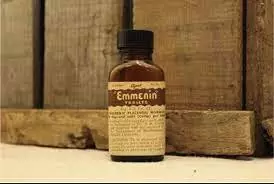
World Menopause Month
The International Menopause Society and the World Health Organization (WHO) designated October as World Menopause Month in 2014. It was created to raise and spread awareness of a phase of life that all women who reach middle age will experience, though the topic has long been relegated to the shadows and silenced with stigma. It’s imperative that we talk and learn about it, though. Here’s why.
Why it’s critical to learn and speak openly about menopause
Perimenopause (the years leading up to menopause, during which your reproductive hormone levels are fluctuating and getting lower) and postmenopause (the years during which your ovaries no longer send out eggs) can be uncomfortable and distracting, and interfere with your completion and enjoyment of a host of daily activities.

(Estrogen levels change over time—Image from Shutterstock)
The lower levels of estrogen, progesterone, and even testosterone in a woman’s body once menopause is reached can also lead to a number of potential health complications including:
- Weight gain
- Muscle weakness and loss of muscle mass
- High blood pressure and cholesterol
- Heart disease and stroke
- Osteoporosis
- Cognitive issues
Those who reach menopause early (age 40-45) or prematurely (before age 40) face these health risks at a younger age, so should be monitored more closely by their physicians.
Benefits of estrogen for your health
The roles that estrogen plays in your overall health and wellbeing are far more widespread than many people are aware of, meaning that the loss of that hormone impacts multiple body systems and functions, not just those related to sexual reproduction.
Estrogen benefits your blood vessels, bones, brain, breasts, hair, heart, mucous membranes, pelvic muscles, and skin.
As your estrogen level subsides, you may experience symptoms such as:
- Thinner and drier skin and hair
- Pain and stiffness in your muscles and joints
- Slower healing of bruises and wounds
- Difficulty falling asleep or staying asleep
- Change in body shape, with more fat around your middle
- Anxiety, depression, and mood swings
- Vaginal dryness and atrophy
- Urinary incontinence
Fortunately, there are various ways to relieve the symptoms of perimenopause and menopause.
History of menopause and its treatment
Some early treatments for menopausal symptoms in Europe in the 1800s included:
- A mixture of carbonated soda, to be imbibed before a meal
- Opium
- Cannabis
- Injections of lead acetate into the vagina
In the 1880s women who participated in German clinical studies were given injections of ovarian tissue extracted from cows. In the 1890s, pharmaceutical manufacturer Merck and Company produced Ovariin, a hormone therapy made from dried and pulverized cow ovaries, available in pill or powder form. This and similar forms of hormone therapy were used for the next couple of decades.

(Photograph of Emmenin, an early form of female hormone therapy—Image
from The History of Estrogen Therapy | Sexual Medicine Reviews PDF)
An estrogen patch appeared in 1928. Emmenin, a hormone therapy (MHT) made from the urine of pregnant women, was introduced in the U.S. in 1931 in tablet form, but proved too expensive to sustainably produce on a mass scale. Premarin, derived from the urine of pregnant mares (female horses), was introduced in Canada in 1941, and still remains popular.
Estrogen MHT steadily increased during the 1940s, ‘50s, and ‘60s, then decreased sharply in the 1970s due to an increase in the risk of endometrial cancer. Its use rose again in the 1980s and ‘90s, due to its helpfulness in preventing osteoporosis, then declined again after a 2002 study was published linking hormone therapy to breast cancer, blood clots, and stroke.
The findings of that study have since been criticized, and revised to reflect that only certain women were at higher risk of developing those conditions, and that MHT was safe for most perimenopausal women.
Symptom management today
Today, treatments for symptoms of perimenopause and postmenopause come in various forms, both natural and synthetic, and from various sources (animals and plants). They can also be administered in many different ways, including pills, creams, patches, vaginal rings, injections, and pellets.
Hormone therapy has its pros and cons, and it’s not for everyone. Some people prefer to explore non-hormonal options such as:
- Medications
- Dietary and herbal supplements and teas
- Complementary modalities such as massage and acupuncture
- Yoga and meditation
- Products that help keep you cool, dry, and comfortable through breathable, moisture-wicking fabrics and other innovations
How you manage your menopausal symptoms is a personal choice. Speak with your doctor or other healthcare provider about your needs and preferences, to decide what methods might be best for you.

